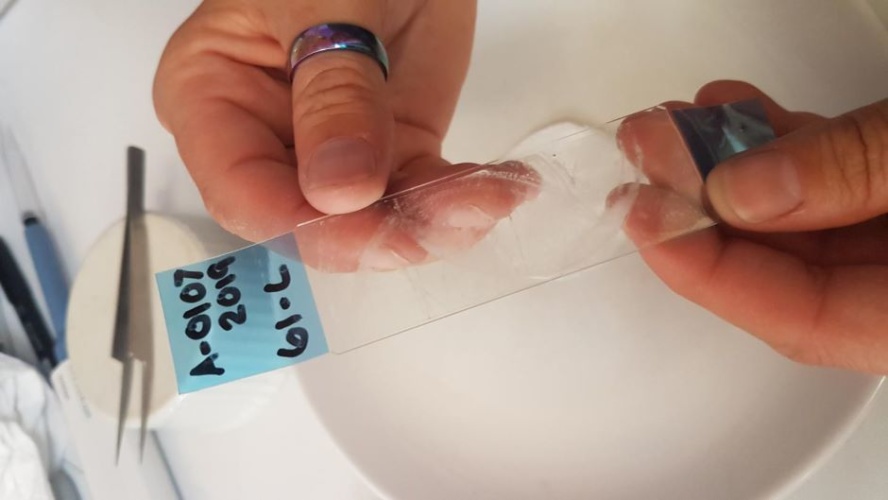
Microplastics are present in land, air and water environments but there is no standardised approach for their collection and analysis.
Studies currently involve retrieving microplastic samples from water using filtration with samples analysed in situ on the filter or after removal from it by hand, which is time consuming and risks accidental loss of the particles and cross contamination.
Claire Gwinnett, Professor of Forensic and Environmental Science at Staffordshire University, is part of the team that created Easylift adhesive tape over a decade ago and has more recently applied her expertise in fibre analysis to microplastics.
“Easylift tape was developed for the forensic market. However, what we have found is that the same benefits are true when looking at particulates from any environment,” she said in a statement. “We realised that it holds great potential for microplastics work, particularly when you are out in the field, for example on a boat or on a beach, where the risk of losing or contaminating your microplastic samples is huge.”
MORE FROM ENERGY & ENVIRONMENT
A new paper, published in Environmental Advances, addresses the shortcomings of current research methods and sets out a new workflow using Easylift tape. The technique uses the self-adhesive tape to ‘lift’ microplastic particles from a filter then safely preserves them between the tape and a sheet of suitable material such as glass.
This method was trialled by Professor Gwinnett during an expedition to collect microplastic samples along the Hudson River in New York with the Rozalia Project where it proved highly effective, with a mean fibre recovery rate of 96.4 per cent. It also enables multiple analytical techniques to be applied to the samples afterwards and preserves them for future study.
Professor Gwinnett said: “The ultimate goal is that this will become the standardised workflow for microplastics research across the world. At the moment, scientists are extrapolating data and it is only through constant monitoring that we will we truly know how much microplastic pollution is out there. If there is a standardised method to globally track microplastics then we can much better understand the risks and where we should be targeting our efforts for mitigation.
“We know plastic pollution is widespread, but we need to understand how much is in different locations, where it has come from and where it is going. What we need is a global collaborative effort to gather that large-scale data.”
Easylift tape was used to collect microplastic samples during a transatlantic sailing expedition in 2020. The Marine Education Centre based in New York State is also training so-called ‘citizen scientists’ to take samples from the Hudson River and other locations using the tape.
Staffordshire University is now collaborating with Oxford University and Nekton Mission to analyse microplastic samples from an expedition to the Antarctic where these particulates will be retrieved from ice cores using Easylift tape.




Poll: Should the UK’s railways be renationalised?
I think that a network inclusive of the vehicles on it would make sense. However it remains to be seen if there is any plan for it to be for the...